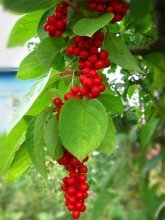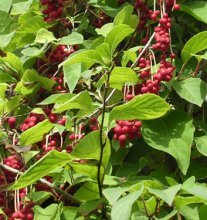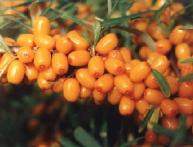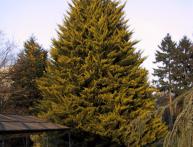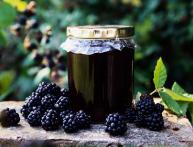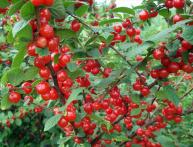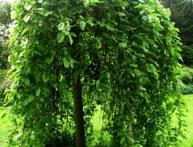Schisandra chinensis: growing from seeds, stratification and sowing
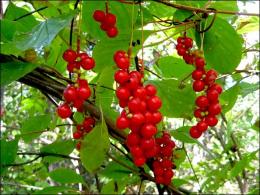
Plants of the Schisandaceae family are represented in the wild by more than twenty different species. Natural habitats are the Far East, China, Japan, India, and the USA.
In the wild nature of the Russian Far East, only Chinese lemongrass grows, the beneficial properties of which have been known to indigenous people since ancient times. Thanks to them, as well as to its rather decorative appearance, the plant is gaining popularity in amateur gardening.
Cultivated varieties adapted to the climatic conditions of Russian regions have been bred for breeding. Schisandra chinensis - growing from seeds today is available to many gardeners, and not just to those who were able to get seeds of a wild plant or bring a seedling from the taiga.
Content:
General information about lemongrass, description 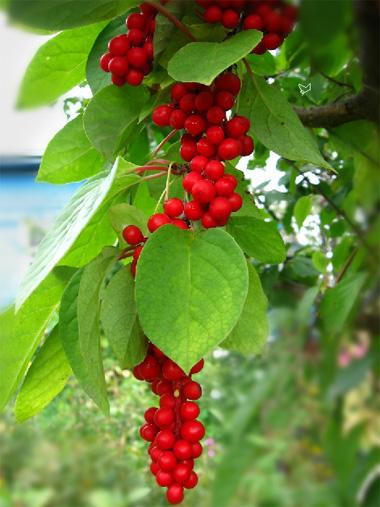
Schisandra chinensis, native to Russia, is a tall, deciduous vine. Strong, very elastic vines reach a height of more than 10 - 12 m. Lianas grow by twining around a suitable support; in the forest they are tall trees. Most often they grow in mixed coniferous-deciduous forests. Prefers drier places with good drained soils.
The liana is covered with brownish-red bark; on adult plants the bark peels off and curls up; young shoots have smooth yellow bark.
Schisandra blooms in May; pink or cream flowers are collected in long racemes.
The flowers are dioecious, sometimes only male flowers can be on one vine, and in this case there is no berry harvest. There will be no berries on the female plant if there is no pollinator nearby.
After flowering, the male flowers fall off, and in place of the female flower a cluster is formed - a multi-berry, up to 12 - 15 cm long, sometimes up to 40 berries are collected on one brush. The berries are bright red or bright orange; inside they contain a convex hard seed, which is shaped like a human kidney.
The brushes with berries adhere firmly to the vine and remain on it until late winter.
All parts of the plant have a weak lemon aroma, and the berries, due to their high content of vitamin C, citric, malic, and tartaric acid, have a sour taste.
In the wild, schisandra thickets are regenerated mainly vegetatively, less often by seeds. In order to grow lemongrass from seeds at home, the seeds must be prepared in a special way.
Stratification, seed sowing 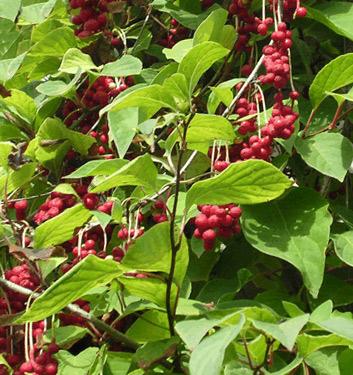
In order to lemongrass seeds sprout, they must be prepared and subjected to the stratification process.
The best results are obtained by storing the berries collected in the fall whole, without removing the pulp from the seeds. In early January, the seeds of Schisandra chinensis are cleared of pulp, and the remaining residues are thoroughly washed off with water.
The washed seeds are completely immersed in cold water, which must be changed several times a day. The soaking process continues for four days. At this time, sand is prepared, which must first be washed and then calcined well. The seeds are buried in it, placed in nylon fabric.
The box with sand and seeds is kept warm, at a temperature of + 20 degrees for thirty days. After this, it is taken out into the garden and buried in the thickness of the snow. In the snow seeds should spend thirty days in the same way.
After a period of exposure in the cold, the box with lemongrass seeds should be kept for 10 - 14 days in a cool place, at a temperature no higher than 10 degrees. As a result of this preparation, the hard shell of the seeds begins to crack, which facilitates germination.
Special boxes or containers are prepared for sowing.
To fill them, one part of sand is mixed with one part of humus. The seeds are laid out on the surface, after which they are sprinkled with a layer of soil half a centimeter thick.
Everything is well moistened, and in order to maintain the humidity regime, keep it covered with a sheet of paper. With daily watering, the first shoots should appear in 10 - 12 days. During the germination period, seeds and seedlings are susceptible to fungal diseases; to prevent infection, it is necessary to shed them once or twice with a pink solution of potassium permanganate.
The first embryonic leaves of Schisandra are similar to the shoots of cucumbers; when the fourth or fifth true leaves appear seedlings are picked either in separate containers or in a common box at a distance of at least five cm from each other.
The seedlings are planted in a permanent location in early June. It is important to remember that in the first three to four years, lemongrass does not tolerate direct sunlight and it is advisable to cover it from them. In addition, as it grows, it will need vertical support, otherwise the seedling will begin to bush and produce numerous root shoots and will not bloom.
Schisandra grown from seeds blooms quite late, approximately in the seventh year, but this method has an advantage over the vegetative method of propagation, since in most cases plants obtained from seeds have both male and female flowers, which allows you to get a harvest even with one vine.
The following varieties are recommended for cultivation in amateur gardens:
- Firstborn
- Purple
- Mountain
- Garden
- Oltis
Schisandra chinensis is an excellent plant for vertical gardening; in addition, berries, seeds, and parts of vines are widely used in folk medicine as a general tonic, to normalize blood pressure, and increase immunity.
Growing and properties of lemongrass on video:
Interesting information about the vegetable garden

